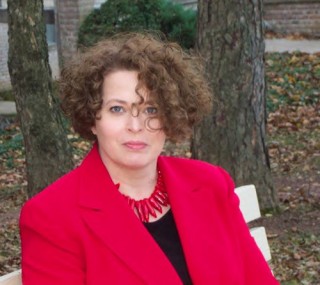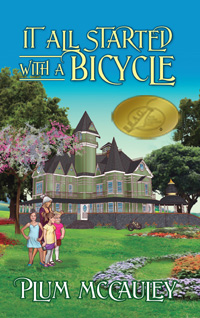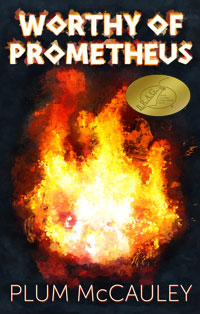 We’ve all seen the articles recounting examples of the staggering ignorance of our student population—college students who aren’t sure who won the Civil War, what the Holocaust was, or even when World War Two took place. I remember years ago reading about a teacher who bemoaned the fact that his students didn’t know which came first, the Renaissance or the Reformation. I wasn’t sympathetic. My only reaction was to think that if any of my college freshman composition students even knew what those historical events were I’d fall into a dead faint…
We’ve all seen the articles recounting examples of the staggering ignorance of our student population—college students who aren’t sure who won the Civil War, what the Holocaust was, or even when World War Two took place. I remember years ago reading about a teacher who bemoaned the fact that his students didn’t know which came first, the Renaissance or the Reformation. I wasn’t sympathetic. My only reaction was to think that if any of my college freshman composition students even knew what those historical events were I’d fall into a dead faint…
There’s probably not one of us in education who doesn’t wail like a Greek Chorus over The Current State of Education in America. We wring our hands, frustrated by our seeming inability to DO anything. This issue reared its head again for me recently when I was looking over the new IndieBRAG website. I had excitedly awaited the changes in genre divisions, hoping that we’d at last have a proper middle grade section into which I could insert my own mystery/adventure novel for the 9-12 year-old set. As any of you know who have a BRAG medallion for a children’s book, the wide range of offerings—from picture books to coming-of-age novels—have hitherto been simply divvied up between “children’s” and “Young Adult.” For my book, I wasn’t satisfied with either of those choices. So I eagerly awaited the new middle grade category.
It’s now here, and while I do realize that the task of designating children’s books into age-appropriate categories is one Hercules might have passed over in favor of stable-cleaning, I’m (respectfully) still not satisfied.
It appears to me that we have a lot of books labeled “middle grade” that are really not at all what I would think of as middle grade. Consider some of the classics from that age group: The True Confessions of Charlotte Doyle, Island of the Blue Dolphins, The Shakespeare Stealer, Hatchet, Crispin: Cross of Lead, From the Mixed-Up Files of Mrs. Basil E. Frankweiler, The Cay, A Wrinkle in Time. These are books of between one hundred and fifty to two hundred or more words, written in mature language, telling the story of a protagonist grappling with mature problems in gritty situations. Children are in danger. Some have to survive for extended periods alone. Murders are threatened or take place, sometimes in cold blood. I am no fan of increasing the maturity of content in children’s books arbitrarily, but a quick read through the offerings of the last century shows that their authors haven’t exactly eschewed the ugly side of life.
In contrast, in our middle grade category at IndieBRAG some of the books are one hundred pages or less, have very childish covers, and plots that, as outlined in the book description, would be better suited to six and seven-year-olds being read to by their parents. Some of these books even have older protagonists—twelve, thirteen, and fourteen—which seems terribly incongruent with the plots (as outlined) and the covers.
Does this call for yet another category of children’s books? Perhaps. After all, these books are more advanced than picture books, and would thus be slighted by being placed amongst them.
And yet a perusal through (and some reading in) the offerings in IndieBRAG’s young adult category inspires in me similar feelings of discontent. In that category there are books designated young adult that seem more appropriate to middle grade. I realize that one of the current trends is to categorize a book’s age group by the age of its protagonist, but why? Just because your protagonist is fourteen doesn’t make the book young adult. Nancy Drew, if you recall, is eighteen years old, and those mysteries are still (thank God) firmly ensconced in the middle grade section of book stores.
Ultimately it’s not really a question of IndieBRAG’s categories, but how we independent authors decide to categorize our own books. I used to be annoyed when I’d hear of agents advising would-be children’s authors to read a hundred books in their chosen age-group before sending their work out. But maybe it isn’t such a bad idea. It would encourage a re-read of classics in that age group from our own youth along with an intensive read through the contemporary offerings. From that research we would be able to ask ourselves honestly, what age-group do I really think my book is for? More importantly we can ask, what age group would I like this book to be for?
Do I hear murmuring in regard to marketability? The pressure to conform to current trends? Of course I do. A read through contemporary books in our chosen genre might only confirm the sort of categorizing of which I’m critical.
But then here’s where our power as independent authors can come into play, to move us from passive critics of the dumbing down of our culture into doing something about it. As self-published authors we have total control over our product. WE choose the genre and subject matter, have complete control over style (which traditionally published authors do not), design the covers, and compose the back matter. If we publish with CreateSpace we even have control over the look of font and fleuron. Our control is to be envied.
So in the course of making all of these choices we should reflect honestly on the cultural work a few of them perform in the education of children. Dumbing down can begin with us—or not.
By Plum McCauley
Meet Plum McCauley on Facebook


I came across your name by way of your Amazon comment regarding the book, CATRIONA.
I have a copy of it and was pleased to read the quality comments.
Thank you.
-Patrick